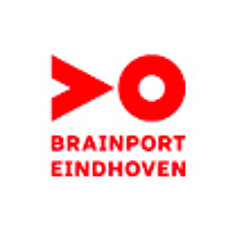"Together, we ensure that smart charging infrastructure is innovative, robust, and future-proof."
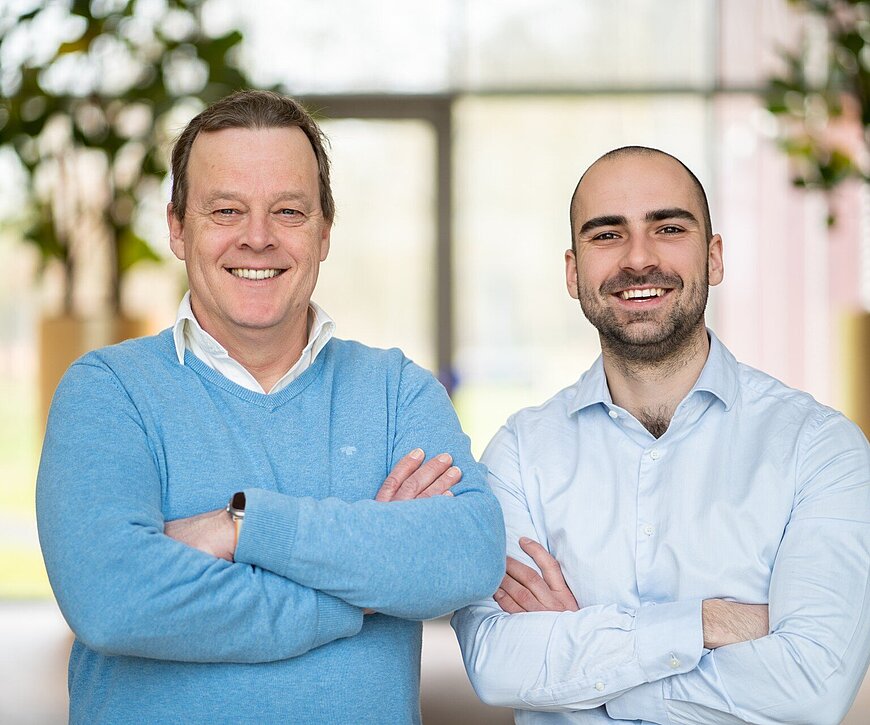
Interview with Peter Markotić from Infiniot and Bruno van Hoek from ElaadNL, partners of the DITM project.
DITM stands for Digital Infrastructure for Future-Proof Mobility. The project is made possible by the Ministry of Infrastructure and Water Management and is funded by the European Union, NextGenerationEU, and DITM partners. In this initiative, Brainport Development and RAI Automotive Industry NL collaborate with partner companies to implement the digital infrastructure for automated transport. This enables us to make mobility more efficient and safer.
With the ambitious goal of achieving fully sustainable mobility by 2050, we are moving towards a future where nearly every vehicle will be electric. This will lead to an explosive increase in electricity demand, posing a major challenge for the power grid. Within work package three of the DITM project, various parties are collaborating to tackle these challenges. But who are the people behind these innovative solutions? We spoke with Bruno van Hoek and Peter Markotić about their work, their vision for the future, and the crucial role of the Energypod in the mobility transition.
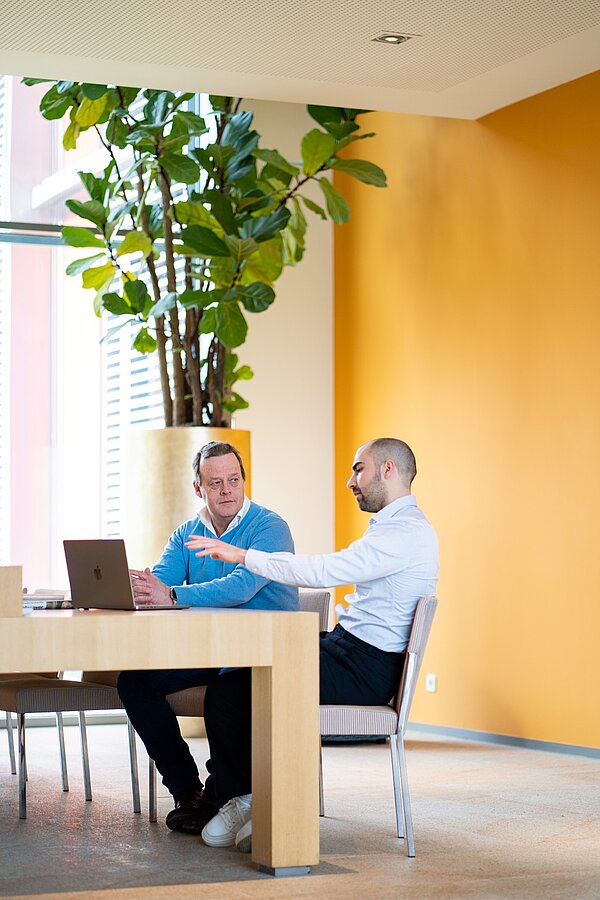
Introduction
Bruno van Hoek is a project manager at ElaadNL, the knowledge and innovation center for charging infrastructure in the Netherlands, established by grid operators. "My work revolves around the future of electric charging and how we can make our infrastructure more efficient and secure. At ElaadNL, I focus on project management and cybersecurity—two roles I also fulfill within work package three of the DITM project. In this project, I am responsible for delivering key outcomes and developing a future-proof security architecture."
Peter Markotić works for Infiniot, a Brabant-based company specializing in consultancy within software engineering and data intelligence, with a strong focus on the energy transition. They develop and implement advanced digital solutions, such as predictive models and smart energy management systems. With this expertise, Infiniot helps grid operators and energy companies enable the energy transition by providing smarter, more efficient, and more sustainable energy solutions.
Markotić: "My passion lies in analyzing data and discovering patterns that help us make smarter choices. Through Infiniot, I work at ElaadNL, which led to my involvement in DITM."
Innovation as the Key
Work package three of the DITM project focuses on innovations that help reduce grid congestion. A key development within this package is the Energypod. "The Energypod is an innovative solution that enables electric vehicles to charge at the most optimal times," explains Markotić. "The system consists of several fast chargers, a battery, and a control unit, all managed by an intelligent scheduling algorithm. This allows charging when the strain on the grid is low or electricity prices are favorable."Van Hoek adds: "Beyond the technical aspects, we also look at practical applications. The Energypod can help prevent grid congestion by intelligently balancing energy demand and supply, providing businesses with a cost-effective solution."Markotić further clarifies the concept: "When you charge your phone at night, it might be fully charged by 2 AM, even though you don’t need it until the next morning. So why not distribute the power more efficiently? We apply this same principle to electric mobility. A vehicle doesn’t always need to be fully charged all at once if it isn’t leaving immediately. Instead, charging can be spread out, taking the electricity grid’s capacity into account."
The Challenges of Grid Congestion
The Dutch electricity grid is reaching its limits. "By 2050, we expect that about one-fifth of total electricity demand will go toward mobility," says Markotić. "That’s a massive amount, so we need smart solutions."Van Hoek: "In some areas, businesses can’t even get a new connection due to grid congestion. That’s a major problem because without electricity, economic growth stalls. Within DITM, we’re collaborating with partners like TNO, NKL, Heliox, and NXP to tackle this issue. The great thing about this project is that it’s about real-world applications—we’re building something that will actually be used."Van Hoek also highlights the importance of knowledge development and sharing. The close collaboration within the DITM consortium is intentional. "DITM gives us the opportunity to develop and test new charging systems within the energy sector. This not only contributes to DITM’s objectives but also allows everyone to apply the knowledge gained in other areas."
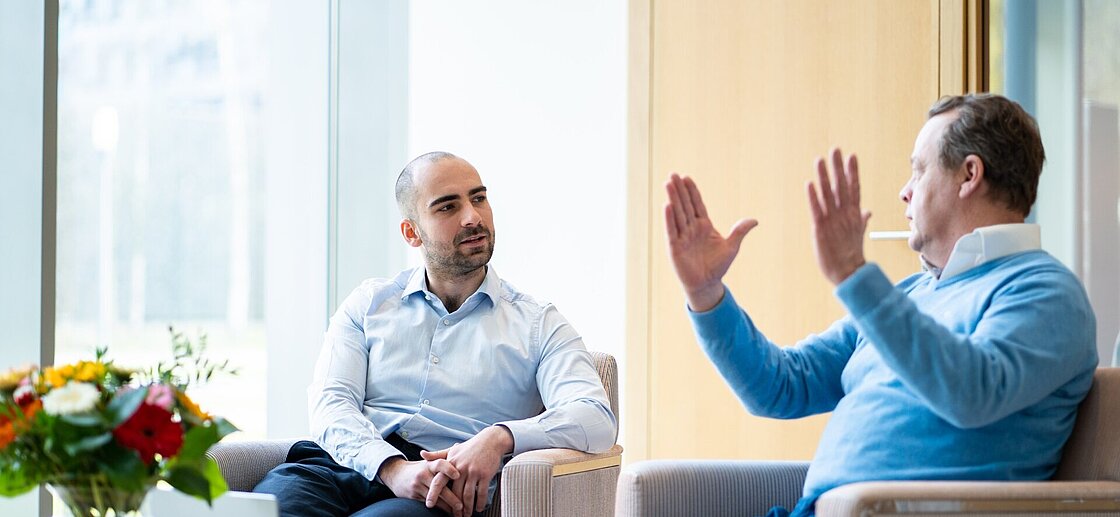
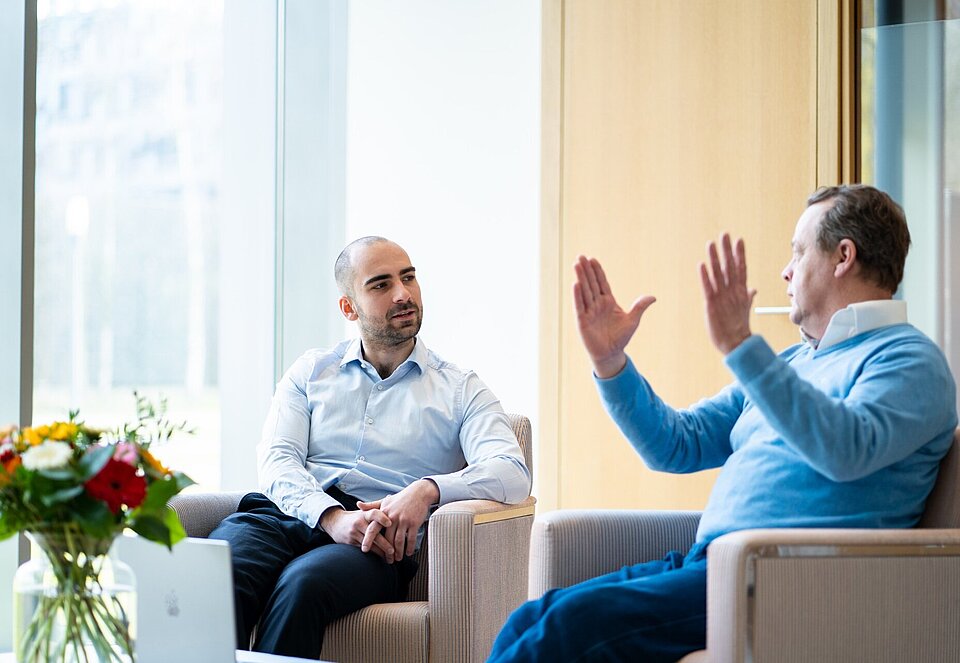
The Role of Cybersecurity
In addition to the Energypod, cybersecurity plays a crucial role in the DITM project. "We are developing a secure and closed system where grid operators and Energypods can exchange information safely," says Van Hoek. "Cyberattacks on critical infrastructure are a real threat. Quantum computers have the potential to undermine future security methods, so we are already considering post-quantum cryptography for systems with a lifespan of over fifteen years."Markotić adds: "A cyberattack on the charging infrastructure could cause significant damage. That’s why it is essential to develop systems that can withstand future cyber threats.
"We are working on something that will fully come into its own in twenty years. That timeline is incredible, and that’s what makes this work so exciting."
From Pilot to Large-Scale Implementation
A key goal of the project is to eventually deploy Energypods across the Netherlands. "We are doing everything we can to move this concept forward after the pilot phase," says Markotić. "That’s why we are conducting an extensive market analysis and seeking partners who want to bring this technology to the market."Knowledge center ElaadNL plays a crucial role in this process. "We test vehicles, systems, and charging stations and share our knowledge with the sector," says Van Hoek. "We do this to ensure that smart charging—and soon even bidirectional charging—works reliably. That’s why ElaadNL invites all manufacturers to have their vehicles tested. Based on our recommendations, they can make adjustments to improve the compatibility and efficiency of their products."
At the Forefront of Innovation
Smart charging is not just a technical challenge; it is also an economic and societal transition. "If an Energypod allows you to connect a hundred additional households to the grid, you’re making a real difference," says Markotić. "Without smart solutions, businesses will struggle to get new grid connections."For both Van Hoek and Markotić, the mobility transition is an inspiring field. "We are truly at the forefront of innovation," says Van Hoek. "The work we do now will shape how we manage energy in the coming decades."Markotić sees this as a unique opportunity: "We are developing solutions today that will become the standard in the future. That’s special."
With the first prototype in development, 2025 is set to be a crucial year for the project. This year will focus on a full-scale validation process, using insights gained to further refine the system. "If this technology is widely adopted, we can not only reduce grid congestion but also provide a robust standard solution for business parks, bus operators, transport companies, and municipalities—regardless of which grid operator is involved," says Markotić.
Looking Ahead
The DITM project has formed a strong consortium, bringing together key players in the sector. However, there is still room for expansion.Van Hoek: "We are already working closely with grid operators and government agencies, such as the National Cyber Security Center, to strengthen digital security in the energy sector. But to truly make an impact, broader collaboration is necessary. That’s why I am actively reaching out to hardware, software, and service providers in the charging infrastructure sector—an industry that is increasingly targeted by cyber threats. Cybersecurity doesn’t stop at national borders. While we are improving protection in the Netherlands every day, international partnerships are essential to keep energy systems secure. Only together can we ensure that charging infrastructure is not just innovative, but also robust and future-proof."
Markotić sees additional opportunities for business parks: "The Energypod has potential beyond just charging. Imagine businesses on an industrial site collectively investing in a battery and smart software. This would allow them to optimize their grid connections and energy consumption. Such a setup creates a comprehensive solution that benefits both businesses and the electricity grid.""Smart charging may seem obvious to us, but many companies still don’t realize how much grid capacity and cost savings it can offer. Right now, only 5% of light commercial vehicles, 5% of heavy commercial vehicles, and 20% of buses are electric. The rest still have to transition. We already know how it can be done—we just need to bring the market along on this journey."
A Shared Mission
For the parties involved, this is more than just a project—it is a mission."I’m almost thirty now, and I realize that I could dedicate my entire career to this mobility transition," says Markotić. "We are working on something that will fully take shape over the next twenty years. That timeline is incredible, and that’s what makes this work so exciting."
With the pilot phase in full swing and the first prototypes being developed, 2025 promises to be a pivotal year. The collaboration within DITM demonstrates that innovation and partnership go hand in hand in shaping the mobility of the future. One thing is certain: the path toward a smart and sustainable charging system has truly begun.
